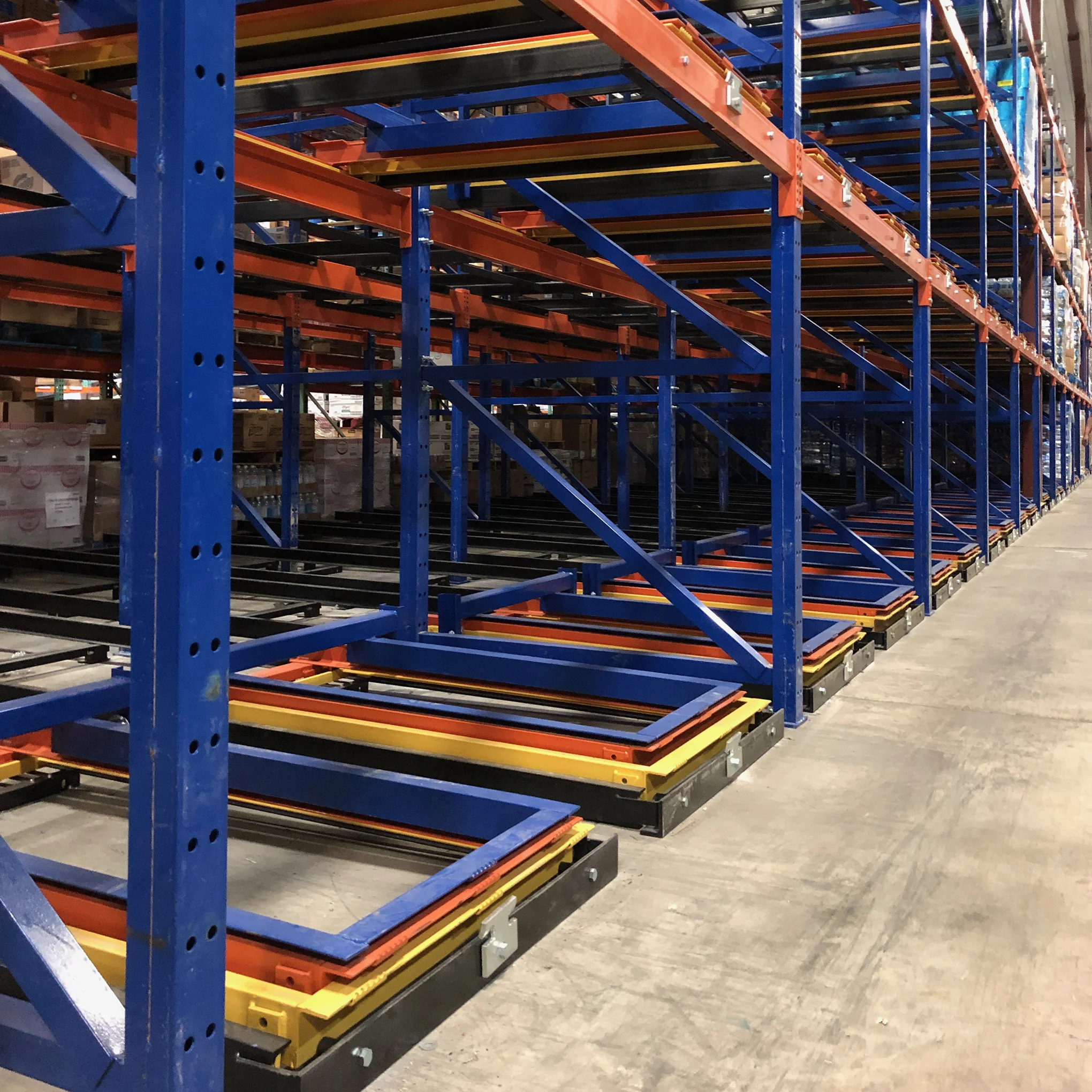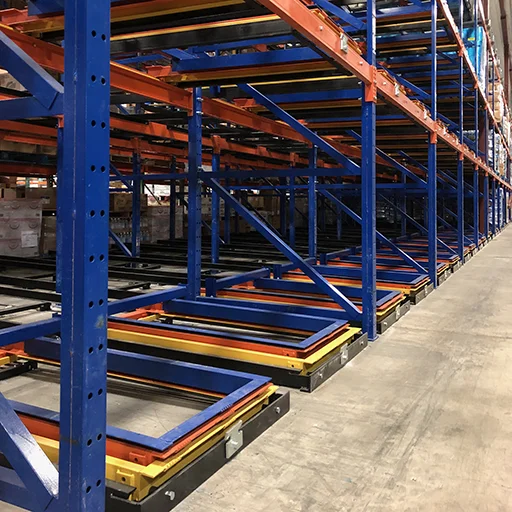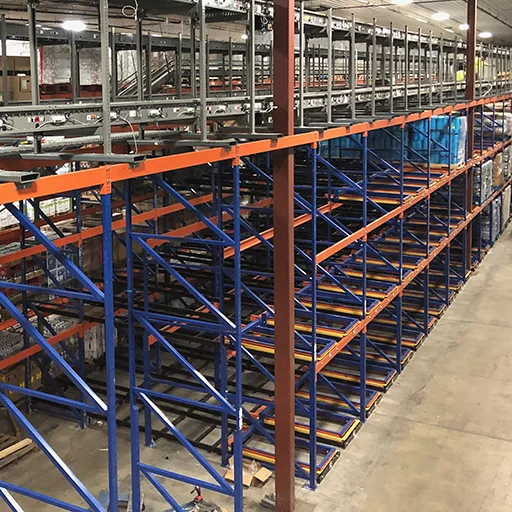Automatic Pushback Racking Overview
Pushback pallet rack is a type of high-density storage system used in warehouses and distribution centers. It allows for the storage of multiple pallets in depth, utilizing the principle of "last in, first out" (LIFO) inventory rotation. This method of storage offers several advantages, including increased storage density, efficient use of warehouse space, and streamlined inventory rotation. It is particularly beneficial for applications where multiple pallets of the same product are stored and where stock rotation is not strictly based on the \"first in, first out\"(FIFO) principle. Pushback rack is used in warehouses and distribution centers where high-density storage and efficient inventory rotation are essential. It is often found in food and beverage distribution where single SKU/Multiple pallet storage is common.





